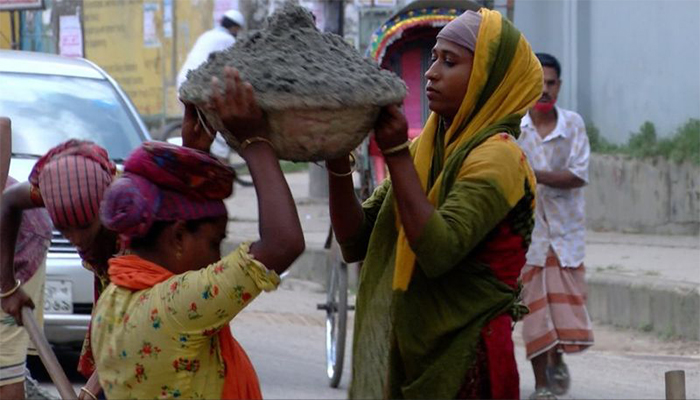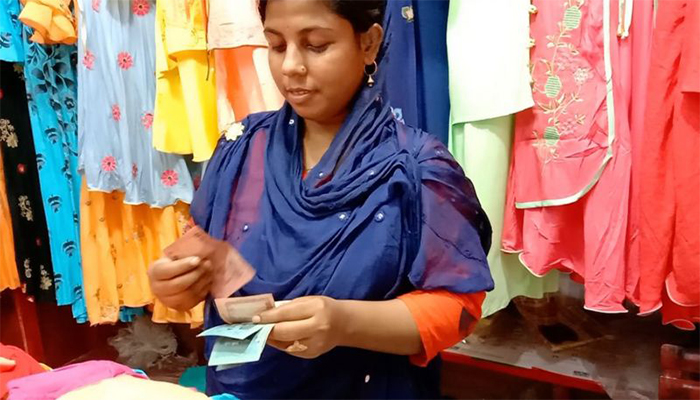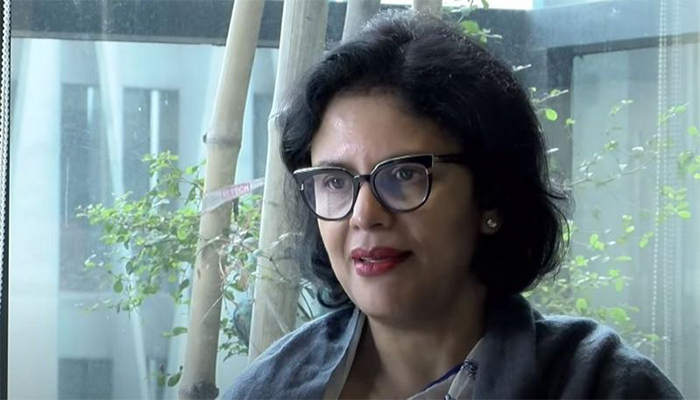
*Abul Kalam Azad
Publish: 18 Sep 2020, 06:41 pm

In Bangladesh, the pay inequality between men and women in the public and private sector is much lower, but in the informal sector, it is still much higher. Researchers, women entrepreneurs and the government also say that eliminating income inequality at all levels is still a big challenge in Bangladesh.
The global wage report of the International Labor Organization (ILO) shows that the average income inequality between men and women in the world is 22 percent. But in Bangladesh it is only 2.2 percent which is the lowest.
Bangladesh Institute of Development Studies - BIDS researcher, Nazneen Ahmed said the reason is not the same in all cases.
"Some income inequality is the creation of the employer and in some cases, the situation or the way of life of the woman is such that her income inequality becomes. Therefore, what we see in Bangladesh is that income inequality exists in the informal sector."
The reason is not merit
Dr. Nazneen says the higher the number of women in the formal sector, the lower the income inequality.
''But in another place, inequality is created. You will see in different places that when we go up in terms of promotion, but then the number of women starts to decrease.
"This is also an indication of a kind of inequality between men and women because it is not always because of merit," says Dr. Nazneen Ahmed.

Women workers are victims of wage inequality|| Photo: Collected
Dr. Nazneen Ahmed said that in the formal sector, there is less chance of discrimination as the salary is fixed for each post. Inequality in the informal sector is high because there is no exact address of how much will be paid, who will be paid how much.
"Women workers who are working on the streets, breaking bricks or building roads are in places but we see that women workers are paid 30-40% less."
Overtime payment
Dr. Ahmed says that while there is often no pay gap between men and women in the formal sector, there is often income inequality where there is an issue of overtime pay.
With the example of the readymade garments sector, he said that the number of women workers in this sector is more than men. But due to overtime, girls are falling behind men in terms of total income.
"Women and men workers who are in the same operator position may be getting the same salary, but men are able to do more over time," he said.

Almost 92% employment of women in the informal sector in Bangladesh|| Photo: Collected
Work environment and safety
Tahmina Style, an entrepreneur, believes that the workplace environment and safety are also important behind gender income inequality.
He thinks women don't get many job opportunities yet. This is because in many places women are subjected to many forms of harassment, and after a certain period of time women are deprived of many types of job opportunities as they face difficulties in returning home. That is also playing an important role in income inequality.
"The question is how much security there is inside the office. I think those who are working in policy-making or at the top level or in decision-making places, if they take the initiative personally in these places, it is possible to solve some of it. "
According to the International Labor Organization, only 6 percent of Bangladesh's workforce is employed in the informal sector. Where the number of women is more.
According to the Labor Survey, 92 percent of employment in Bangladesh is still in the informal sector.

'Attitudes need to change'
BGMEA President Dr Rubana Haque said a change of attitude is necessary to eliminate income inequality.
"For my own company, I said I would not buy raw materials from an accessories and fabric supplier company if there were no women on the board. Suddenly, it turned out that their wife had put their sister on the board overnight. No. "
Rubana Haque said change will not come only if decisions are made in principle. He also expressed the view that the objective would not be achieved if various gaps were found and paired.
"We all need to change our mindset - against women's employment.
"It's not just about women workers, we're in the places where we're, but we don't see any reduction in discrimination. All in all, we must fight together to change this picture. The war is for everyone, "says Rubana Haque.

The participation of women in the labor market in Bangladesh is about 36 percent. The last few decades have seen an increase in the participation of men as well as women in the labor market of the agro-industry and services sector.
In the organized sector, 2.5 crore women are engaged in various professions in Bangladesh.
Government plans
However, most of the women's employment is still in the informal sector, and since there is a lot of inequality, many are looking at government plans in this regard.
Planning Minister MA Mannan says he acknowledges that although the situation of women has improved, it is not ideal.

"We want equality between men and women in principle. But in reality we acknowledge the difficulties. And apparently we will give them preference to cross them. "
According to Planning Minister MA Mannan, women are relatively backward due to cultural reasons.
"We have no wage difference in the public sector. It's illegal. Not everything in the private sector is to our knowledge. But there too we are told that no distinction can be made in principle. But in reality we will not deny that it is.
"We are giving priority to women. I will continue to do so, but I will do everything in a smooth way, ”said Planning Minister MA Mannan.
Source: BBC Bangla
*The writer works at BBC Bangla
Subscribe Shampratik Deshkal Youtube Channel
Topic : wemwn worker wage gap Income Gap
© 2024 Shampratik Deshkal All Rights Reserved. Design & Developed By Root Soft Bangladesh